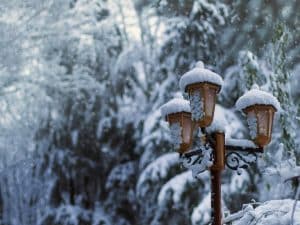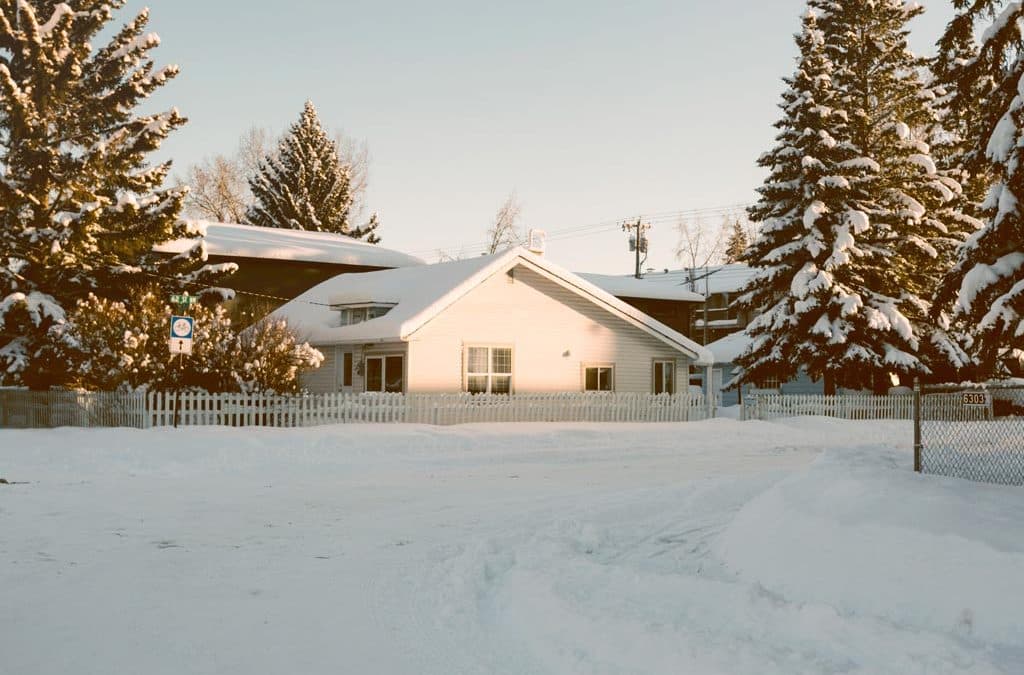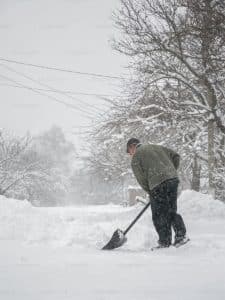Winter storms can strike without warning, bringing freezing temperatures, heavy snowfall, and dangerous ice. These hazardous conditions can threaten the safety of your home and family. Being prepared for these events is not just advantageous—it’s essential. This article will guide you through the critical steps to protect your home from the potential devastation of winter storms. We’ll cover everything from emergency supplies to preventative maintenance, focusing on ensuring the safety and security of your dwelling and loved ones. We aim to equip you with the knowledge and tools to weather any storm with confidence and peace of mind.
Understanding Winter Storms
Understanding these weather events is crucial to shield your home and family from winter storms. Winter storms are not generic occurrences; they come in different forms, each bringing challenges.
Definition and Types of Winter Storms
Winter storms are weather events characterized by freezing temperatures, strong winds, and precipitation in the form of snow, sleet, or freezing rain. These storms can be classified into various types, including blizzards, ice storms, snow squalls, and lake effect storms. A blizzard, for instance, involves heavy snowfall and wind, while an ice storm features rain that turns into ice upon contact with cold surfaces.
Common Hazards Associated with Winter Storms
Winter storms pose a variety of risks. Snow accumulation can lead to dangerous travel conditions and potential roof collapse. Freezing temperatures can cause hypothermia and freeze water in pipes, leading to potential property damage. Power outages are another common hazard, as heavy snow and ice can bring down power lines, leaving homes without heat or electricity for extended periods.
Possible Impacts on Homes and Families
The impact of winter storms on homes and families can be severe. Beyond the physical damage to property, such as frozen pipes or roof collapse, there are risks to personal safety. Power outages can make heating homes difficult, leading to dangerous indoor temperatures. Road conditions can become hazardous, isolating families and making it difficult for emergency services to reach those in need. Understanding these potential impacts makes you better prepared to protect your home and loved ones.
Preparing Your Home
To minimize the risk of damage and ensure the safety of your household, you need to undertake specific preparatory measures before a winter storm hits. These precautions range from inspecting and maintaining parts of your home to securing outdoor items and stocking up on emergency supplies.
Inspecting and maintaining the roof, gutters, and downspouts
Regular inspection and maintenance of your roof, gutters, and downspouts are crucial, as these areas are particularly vulnerable during winter storms. Keeping them in good condition will prevent water and snow accumulation, reducing the risk of leaks and roof collapse.
Weatherizing doors and windows to prevent drafts
Weathering your doors and windows by sealing gaps and cracks can keep cold and warm air out. This makes your home more comfortable and reduces energy consumption during winter.
Insulating pipes and protecting against freezing
Insulating your pipes is essential to prevent them from freezing and bursting, which could result in considerable water damage. Knowing how to shut off your water if your pipes freeze is also wise.
Securing outdoor items and trimming tree branches
Before a storm hits, secure outdoor items like patio furniture and grills to prevent them from becoming projectiles in strong winds. Likewise, trim overhanging tree branches to reduce the risk of them falling and causing storm damage.
Stocking up on emergency supplies
Prepare for possible power outages and road closures by stocking up on necessary supplies. This includes non-perishable food, water, batteries, flashlights, and medications. A well-equipped emergency kit can make a significant difference during a storm-related crisis.
Protecting Your Family
While preparing your home is vital to winter storm readiness, ensuring your family’s safety should always be the top priority. This involves a series of steps, including creating a family emergency plan, assembling a well-equipped emergency kit, identifying safe areas within the home, staying informed about weather conditions, and establishing robust communication plans with family members and neighbors.
Creating a Family Emergency Plan
An emergency plan is a blueprint for how your family will respond when a winter storm strikes. It should include evacuation routes, meeting points, and emergency contact details. Each family member should know this plan and their role during an emergency.
Assembling an Emergency Kit with Essential Items
A comprehensive emergency kit can be a lifesaver during a winter storm. The kit should contain non-perishable food, water, medical supplies, flashlights, batteries, space blankets, and other essentials. Remember to consider the specific needs of your family members, such as baby supplies or medication for chronic illnesses.
Identifying Safe Areas within the Home During a Storm
Identify and communicate the safest areas in your home where family members can shelter during a storm. These areas should be away from windows and other potential hazards. If possible, stock these areas with emergency supplies.
Staying Informed with Weather Alerts and Updates
Keep up-to-date with the latest weather forecasts and warnings. Many weather services offer mobile alerts, which can provide you with real-time updates about impending storms. Another option is the use of weather radios. These devices can receive emergency weather alerts even when power or cell phone service is down. Staying informed will help you prepare and respond appropriately.
Establishing Communication Plans with Family Members and Neighbors
In a winter storm, communication is key. Establish a plan to stay in touch with family members who are not home during the storm. Also, consider setting up a system with neighbors to check in on each other, especially if the neighborhood includes elderly or vulnerable individuals.
Safety Measures During a Winter Storm
Understanding safety measures during a winter storm is crucial in ensuring your and your family’s well-being. Some key areas to focus on are traveling safely in inclement weather, using heating sources correctly, avoiding carbon monoxide poisoning, preventing hypothermia and frostbite, and safely clearing snow and ice from walkways and driveways.
Tips for Safe Travel During Inclement Weather
Traveling during a winter storm can be dangerous, but knowing how to do it safely is important if it’s unavoidable. Some tips include checking road conditions, using caution, reducing driving speed, and ensuring your vehicle is equipped with emergency supplies. If possible, avoid traveling during a storm altogether.
Proper Usage of Heating Sources and Fire Safety Precautions
As the temperature drops, heating sources become indispensable. However, the improper use of these appliances can lead to fire incidents. Follow all safety instructions when using heating sources, and have working smoke detectors throughout your home.
Avoiding Carbon Monoxide Poisoning Risks
Carbon monoxide poisoning can be a silent killer in winter months, especially due to the increased use of heating appliances. Make sure to have a carbon monoxide detector installed and check it regularly. Never use gas-powered appliances indoors. If you experience symptoms of carbon monoxide poisoning, leave the area immediately and seek medical attention.
Preventing Hypothermia and Frostbite
We’ve mentioned this before, but it’s important to repeat this: exposure to freezing temperatures during a winter storm can quickly lead to harmful conditions such as hypothermia and frostbite. Make sure to dress warmly when venturing outside and learn to recognize the symptoms of these conditions in yourself and others. Seek medical attention immediately if needed.
Safely Clearing Snow and Ice from Walkways and Driveways
During and after a winter storm, it’s essential to clear snow and ice from your property to prevent accidents and maintain access to your home. However, it’s crucial to do this safely to avoid any injuries. Use appropriate snow shovels, take breaks when needed, and be cautious of potential hazards hidden beneath the snow. It’s vital to prioritize safety and preparedness during winter storms to protect yourself, your family, and your property.
Dealing with Power Outages
During a winter storm, power outages can be common and pose significant risks without preparations. Here are some steps to prepare for and handle these situations safely and efficiently.
Preparing for Potential Power Outages
 Power outages can be a daunting prospect during a winter storm. Preparing in advance can help you cope more effectively. Ensure you have a supply of flashlights and batteries readily available. Charge your devices in advance and consider investing in a power bank for your electronic devices. Remember to check the battery in your smoke and carbon monoxide detectors, too.
Power outages can be a daunting prospect during a winter storm. Preparing in advance can help you cope more effectively. Ensure you have a supply of flashlights and batteries readily available. Charge your devices in advance and consider investing in a power bank for your electronic devices. Remember to check the battery in your smoke and carbon monoxide detectors, too.
Using Generators Safely
If you have a generator, it can be a great help during power outages. However, incorrect use can lead to carbon monoxide poisoning. Never use a generator indoors or in a garage. It should be kept outdoors, away from windows and doors. Follow the manufacturer’s instructions, turn it off, and let it cool before refueling.
Keeping Warm Without Electricity
If the power goes out, keeping warm becomes a priority. Layer up your clothing, and use blankets to stay warm. Cover windows with blankets or towels to keep the cold air out. If you have a fireplace, have a wood supply ready for use. Remember, never use outdoor grills or heaters indoors! They can lead to carbon monoxide poisoning and death.
Food Safety Tips During Power Outages
Power outages can affect the safety of the food in your fridge and freezer. Keep the doors closed as much as possible to maintain the cold temperature. A fridge will keep food cold for about 4 hours, and a full freezer will hold its temperature for about 48 hours. Have a supply of non-perishable food items that do not require cooking or refrigeration.
Post-Damage Recovery and Storm Damage Restoration
After a winter storm, damage restoration and recovery can be a daunting task. Here are some steps to guide you through the process.
Assessing and Documenting Storm Damage
After the storm, take a detailed survey of your property to assess the damage. This includes checking your home’s exterior, interior, and surrounding property. Document the damages with photographs and detailed notes. This documentation will be crucial for insurance claims and repair professionals.
Contacting the Appropriate Professionals for Repairs
Once you have assessed and documented the damages, contact professionals for storm restoration and repairs. This could include a storm restoration contractor, electricians, plumbers, or roofers. Remember, safety is paramount. Do not attempt to repair major damages on your own.
Handling Insurance Claims and Documentation
Contact your insurance company as soon as you have documented the damage. Provide them with the details of the damage and any repair costs. Keep copies of all correspondence and documentation for your records.
Cleaning Up Debris and Restoring the Property
Begin the process of cleaning up your property. This includes clearing debris, removing snow, and making minor repairs. Be wary of potential hazards like downed power lines or icy patches. Let professionals handle larger repairs and hazardous issues. They have the tools and professional training to tackle these issues safely.
Taking Steps to Prevent Future Storm Damage
After a storm is one of the best times to prevent future storm damage; this could involve reinforcing structures, trimming trees near your property, or updating your home’s insulation for better protection against harsh weather conditions. Reinforcing structures, for example, might involve updating the roofing materials on your home with more durable options or reinforcing windows with storm shutters. Trimming trees near your property is also important to prevent branches from breaking and causing damage to your home. Overgrown branches can become heavy under snowfall and break, posing a risk to people, power lines, and buildings. Moreover, updating your home’s insulation can offer better protection against harsh weather conditions. Proper insulation keeps your home warm during cold weather and can also prevent ice dams — a common cause of roof leaks in the winter. High-quality insulation and ventilation in your attic space will prevent warm air from melting snow on your roof, which can refreeze and create damaging ice dams.
Conclusion
Preparing for winter storms is not just a choice but an absolute necessity. By adopting the measures outlined in this guide, you ensure your property’s safety and, more importantly, safeguard the well-being of your loved ones. It’s important to remember that hazards don’t end when the storm does; the recovery process demands equal attention and precaution. And remember, Surebuild Restoration is a steadfast ally, ready to provide professional assistance for your winter storm damage. Contact them today for more information about storm preparation and storm damage restoration. Let’s not leave our safety to chance.


